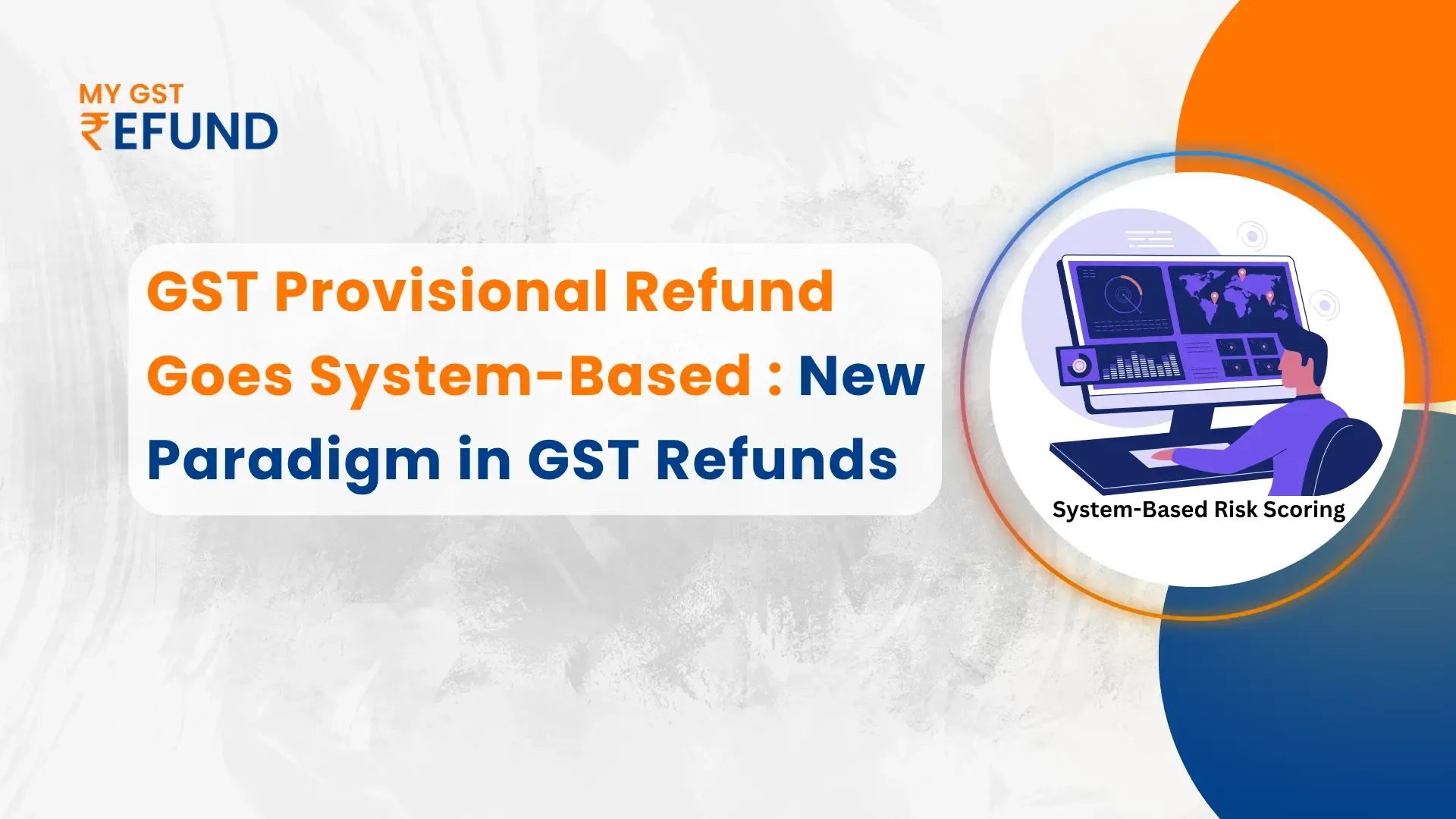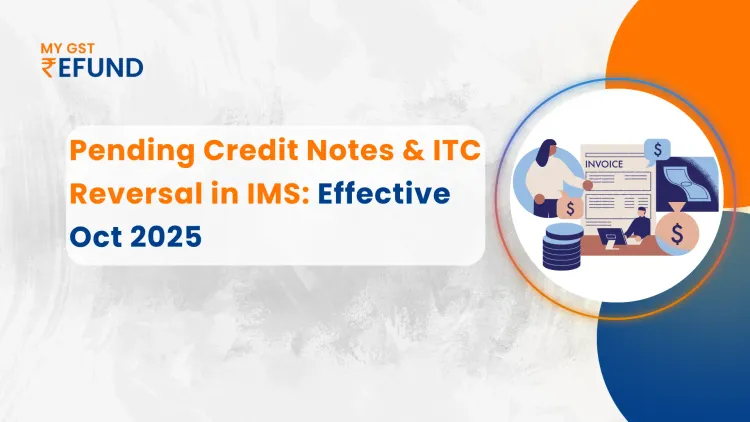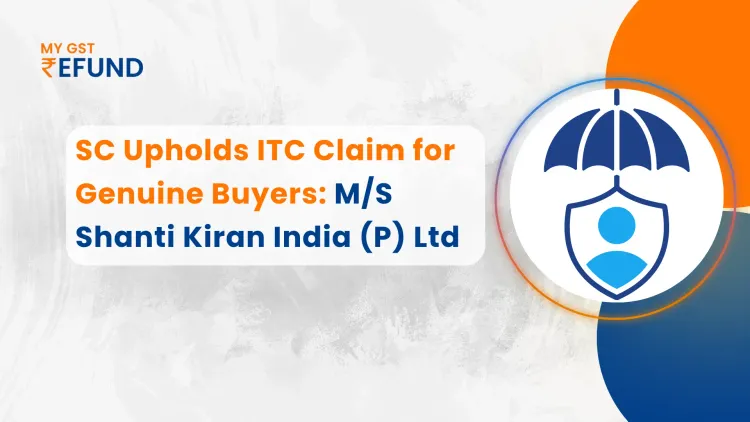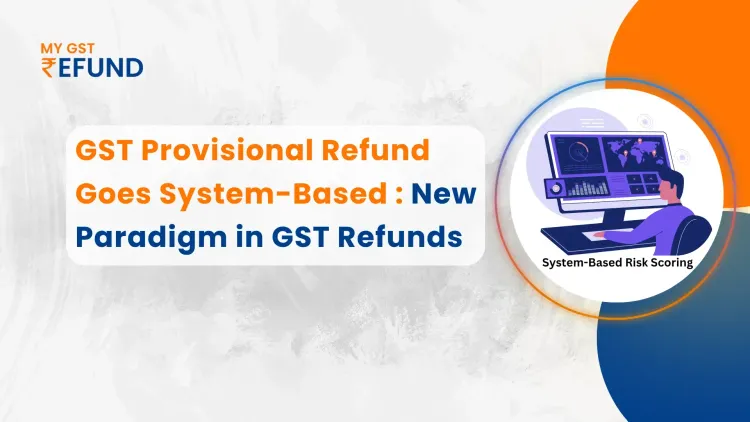How System-Based Risk Scoring is Redefining Refund Eligibility
Published on: Tue Oct 07 2025
Bio (Reveal/Hide)

October 1st GST Deadline: CBIC Issues Clarification on Provisional Sanction of Refund Applications based on Identification and Risk Assessment by System
Risk-based provisional refund facility
The Central Board of Indirect Taxes and Customs ( CBIC ) has issued Instruction No. 06/2025-GST dated 3rd October 2025, issuing detailed instructions on provisional sanction of refund applications under GST. This was released after the suggestions of the 56th GST Council, where the proposal for amending Rule 91(2) of the CGST Rules, 2017 was accepted. Under the new system, the concerned officer shall sanction provisionally 90% of the claims on identification of system risk and system assessment for quick processing of the claims and ease of facilitation of trade.
A New Paradigm in GST Refunds
On October 1, 2025, the Central Board of Indirect Taxes and Customs (CBIC) launched a revolutionary new refund processing system for GST refunds under Instruction No. 06/2025-GST. It is a major change from the conventional, manual ways of reviewing refund applications.
The fundamental concept in this plan is to use a system-based, computerized method of sanctioning refunds. Instead of officers verifying each claim individually, the GST Network will now use sophisticated risk assessment parameters for deciding on compliance.
Understanding the New Mechanism: Risk Scoring
The fundamental concept is to auto-sanction and process 90% of the provisional refund value automatically for taxpayers with a good compliance history so that companies receive quick and predictable cash flows.
Under the new system effective from October 1, 2025, refund applications scored as "low risk" will automatically receive a 90% provisional refund after acknowledgment. An officer can only stop this for specific, recorded reasons. Conversely, "non-low risk" claims will undergo full scrutiny before any payment is made.
However, this provisional refund will not be granted in certain situations, such as:
- When statutory requirements are not met.
- For specific taxpayers notified by the government.
- If the claim is tied to a pending legal appeal.
What is System-Based Risk Scoring?
In the revised system, the GST portal gives a risk score to each refund application.
Low Risk: Automatic 90% provisional refund is granted.
Non-Low Risk: Claim is processed with careful manual examination with no provisional payment.
Claims Under the New Ambit: Zero-Rated vs. IDS
The refund under GST has been revamped to provide the industry with improved cash flow:
For Zero-Rated Supplies (Exports/SEZ): Provisional refund of 90% now has a quicker, risk-based auto process.
For Inverted Duty Structure (IDS): Provisional refund facility of 90% is now available for these claims. It is a huge relief to manufacturers, alleviating a huge working capital crunch.
Who is NOT ELIGIBLE for Provisional Refund (Notification No. 14/2025)
Eligibility to receive Provisional GST Refunds
These types of taxpayers have been informed by the government as not eligible to take the facility of a provisional refund of 90% to protect revenue as well as avoid fake claims. These limitations are explained in notifications such as No. 14/2025-Central Tax and are mainly concerned with the compliance record of the taxpayer as well as the type of goods supplied.
Principal Ineligibility Criteria
Aadhaar Authentication Not Done: Any person enrolled who has failed to authenticate his/her Aadhaar, as required under Rule 10B of the CGST Rules, is not qualified for a provisional refund. This is a key KYC for verification of the taxpayer's identity.
Suppliers of High-Risk Commodities: Companies trading in some notified goods, which are generally prone to evasion of tax, are particularly excluded. These include suppliers of:
- Pan Masala
- Tobacco and processed tobacco substitutes
- Areca nuts (supari)
- Essential oils
Tax Evasion History: The assessee charged with tax evasion of an amount over a threshold amount (generally ₹2.5 crore) in the past five years from the date of filing the refund request is not entitled to the provisional amount.
How the System Assesses Risk
The automated GST system gives a risk rating to every request for refund in order to confirm the payment authorization at a provisional level. The audit is against the overall compliance and filing record of the taxpayer. A low-risk rating is followed by a provisional refund quickly, whereas a high-risk rating involves rigorous scrutiny of the request.
Impact and Action Plan for Businesses
The Upside (Benefit)
Liquidity: Huge reduction in time to reclaim 90% of working capital refund.
Less Friction: Reduced need for manual intervention and interaction with tax authorities for 'low-risk' claims.
The Flaw (Risk)
Pressure of Compliance: The system greatly encourages clean compliance. Any inherent mismatch or deviation will instantly drive the claim into extensive, time-consuming examination.
Recovery: If the recent known amount of refund is less than 90% reimbursed provisionally, the tax department will start recovery proceedings by issuing a Show Cause Notice (SCN) (Form GST RFD-08).
Impact
Benefit: Receive a 90% refund immediately (liquidity injection) with minimal manual intervention for compliant taxpayers.
Risk: Excessive compliance burden; any significant mismatch makes immediate, full-fledged scrutiny mandatory. In case of a lower final verified REFUND, recovery by way of SCN is initiated.
Immediate Action
Mandatory Check: Match with GSTR-2B before filing a claim.
Ensure: File all returns (GSTR-1, GSTR-3B) accurately and on time.
Complete: Aadhaar verification in one single attempt.
Conclusion or clarification note from the Advisory
The shift of the CBIC to a system-based provisional refund is a technology-powered, forward-looking transformation. It seeks to build an environment of trust that reduces the financial burden on taxpayers who are honest. The message from the government couldn't be clearer: the quickest way of getting your money back is through seamless digital compliance.
Frequently Asked Questions
Q1: What is this provisional refund based on the GST system?
It's a computerized system, launched on October 1, 2025, where a risk score is given to a request for a refund by the analytics engine of the GST portal. 'Low-risk' applications can be given a provisional refund of 90% within a time of virtually nothing.
Q2: Who qualifies for the 90% provisional GST refund?
Registered taxpayers applying for refunds for Zero-Rated Supplies (such as exports) and, in their first instance, Inverted Duty Structure (IDS) applications are eligible if they are 'low risk' from the perspective of the system and not part of an excluded group.
Q3: Are IDS claims provisional refundable?
Yes. In relief to the manufacturers, the 90% provisional refund facility has been made available on an interim basis for IDS claims from October 1, 2025.
Q4: What happens if my refund claim is categorized as 'Non-Low Risk'?
If your claim is tagged 'non-low risk', you will not be given the 90% provisional refund. Your application will then be strictly manually checked by a GST officer prior to any payment being authorized.
Q5: Who is NOT covered by the new provisional refund mechanism?
Taxpayers who have failed to complete Aadhaar authentication, have notified high-risk products (e.g., pan masala, tobacco), or have been prosecuted recently for large tax evasion are not eligible for the provisional refund.
Q6: What does my business need to do to prepare for this new system?
In order to be considered as 'low risk', you would need to take care of immaculate compliance. i.e., filing all the returns on time, being sure that there are no mismatches in GSTR-1, GSTR-3B, and GSTR-2B, and turning off your Aadhaar authentication.
Related Posts





